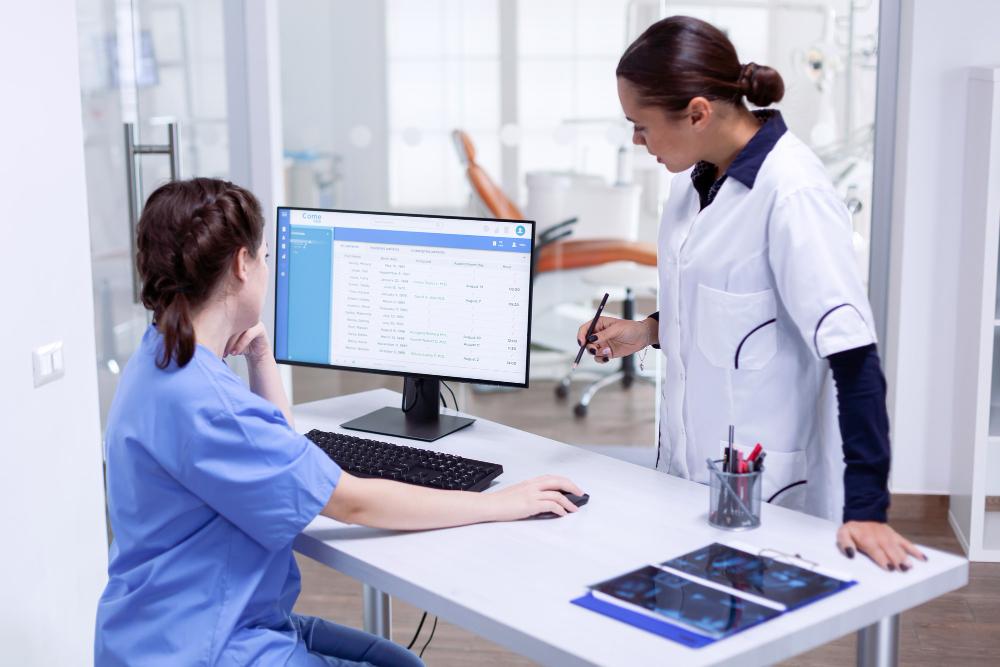Automation has disrupted various industries, and this holds for healthcare. Technology has revolutionised the charge entry process in medical billing to bring improved efficiency and accuracy.
SkyWeb Service offers holistic solutions to enable healthcare providers to process their medical billing operations. Automation enables healthcare facilities to reduce errors, save costs, and speed up revenue cycles, which in turn allows for better patient care.
Efficiency in Data Entry
One of the major facets whereby automation can win over other manual methods of entering data is sheer performance in time savings. This allows automated systems to obtain patient information, medical codes, and procedure details through EHRs and rectify any errors in real-time.
Manual data entry takes away a lot of time and potentially allows incorrect information to be put in some cases.
The reduced human error, in turn, avoids claim rejection, delays, and headaches for health care providers regarding improper data.
Health care providers are therefore presented with quicker processing times and can successfully submit claims on time to enhance their cash flow.
Reduced Error Rates and Increased Accuracy
Errors in charge entry cause a financial dent on claim denial and late reimbursement. Providers, through automation, can greatly minimise these errors to enhance the accuracy of medical billing charge entry processes.
Automated systems use intelligent algorithms and validation checks that verify the accuracy of codes, patient data, and procedure descriptions.
By trapping errors with such systems before submission of a claim, huge rework costs and rejection are avoided. Hence, accuracy brings smooth billing cycles and predictable revenue into the practices.
SkyWeb Service does integrate advanced solutions to support healthcare providers, minimising their errors in the medical billing process.
Cost Savings for Healthcare Providers
The charge entry process in medical billing is labour-intensive, especially if done manually. Automation can help providers save many labour costs on their charge entry assignments.
In doing so, it frees healthcare employees to work on more strategic issues, such as fielding patient questions and solving complex billing cases.
In addition, the time gained through automation will allow for early reimbursement, thus aiding the provider's stability.
More budget alternatives can then enlighten the quality of care because less funding is being consumed on manual processes that enhance operational efficiency.
Higher Compliance and Regulatory Conformance
The medical billing process is regulated to the hilt. Therefore, it is extremely important to keep up with changing laws, rules, and requirements in the sector.
Automation is consistent and accurate, maintaining such that all medical codes and billing information are in line with required regulatory guidelines. This reduces the chances of compliance errors that can attract huge fines or even lead to legal issues.
Automated systems can be updated to meet the demands of new changes in the regulation of medical billing so the healthcare facility remains compliant without needing manual supervision.
Enhanced Revenue Cycle
The charge entry process in medical billing and revenue cycle speed are directly related. Automation accelerates the entire billing process from charge entry to claim submission and payment collection.
By reducing manual effort, automated systems reduce processing time and delay. Hence, it allows faster payment collection, thereby accelerating cash flow for healthcare providers.
The revenue cycle must be speedier to ensure operational viability, with healthcare organisations adopting automation to effect this change in billing. Timely reimbursements from the insurance agency mean that cash flow is relatively easier to predict.
Increased Reporting and Analytics
Automation in medical billing promotes better reporting and analytics. With automated systems, healthcare providers can get real-time data about their billing activity, claim status, and outstanding payments when making decisions.
With reporting that provides all details, providers can easily identify changes in billing, monitor their revenue cycle successes, and rectify any nuisances or choke points.
Healthcare providers can also use data-driven insights to estimate future revenues and, thus, actually improve their budgeting.
Seamless Integration with Other Healthcare Systems
Automation tools in charge entry processes in medical billing can integrate seamlessly with other healthcare systems, including Electronic Health Records (EHR) and Practice Management Software (PMS).
This integration minimises data mismatch through the accurate transfer of all patient-related data between the two systems.
Likewise, automation makes sure that any changes regarding the patients are put into effect in real-time so that a comprehensive picture of their care and history is obtained.
With all the healthcare systems synchronised, it increases operational efficiency, reduces data discrepancies, and gives the final pointer that charge entries are both processed and executed timely.
By improving efficiency while reducing errors and improving cash flow, automation assists in the charge entry process in medical billing. The mentioned site's solutions enable healthcare providers to streamline their medical billing processes and speed up reimbursement, improving accuracy.
